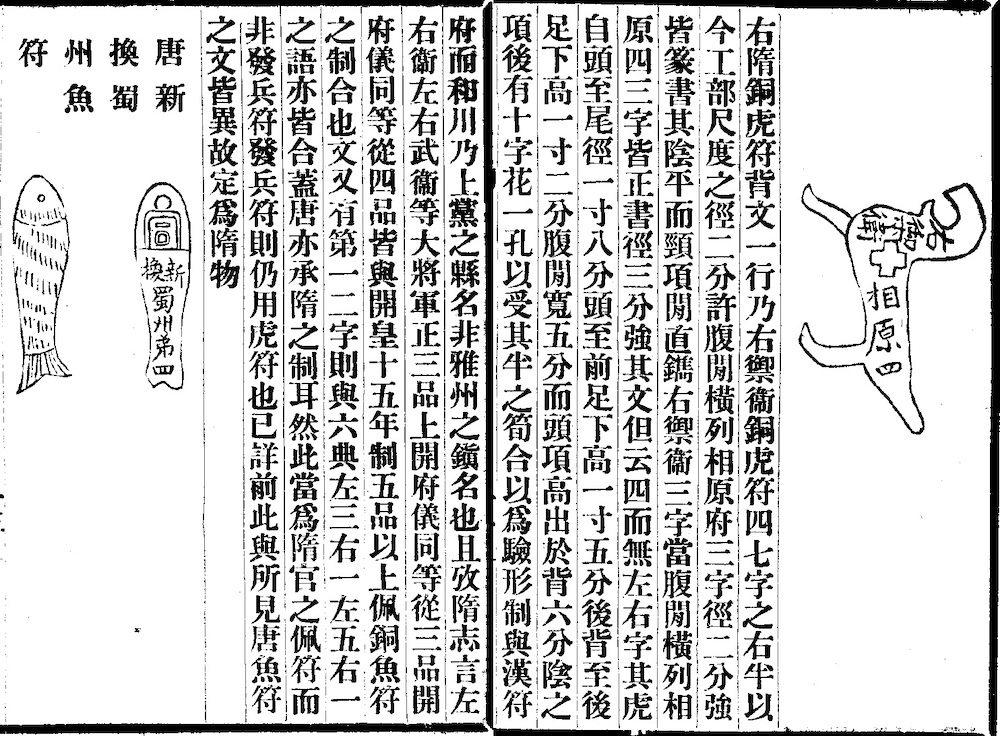Ji gu guanyin kaozheng 集古官印考證 is a book on the inscriptions of ancient seals written by Qu Zhongrong 瞿中溶 (1769-1842), courtesy name Jingtao 鏡濤 or Anchai 安槎, style Mufu 木夫, Changsheng 萇生 or Mu Jushi 木居士, from Jiading 嘉定 (today part of Shanghai). He obtained the jinshi degree in 1814 and was judicial secretary (liwen 理問) of the provincial administration commission (buzhengsi 布政司) of Hunan. Qu was not just an ardent collector of antiques, but professed in certain disciplines himself, mainly historical phonology, painting and calligraphy. He wrote a large amount of scholarly books in collectibles, like Hunan jinshi zhi 湖南金石志, Wujun jinshi zhi 吳郡金石志, Han jinwen bian 漢金文編, Yizaitang guyu tulu 奕載堂古玉圖錄, Ji gu hufu yufu kao 集古虎符魚符考, Shuowen diming kaoyi 說文地名考異 or Chunqiu sanzhuan jingyi beikao 春秋三傳經異備考. His collected writings are called Yizaitang wenji 奕載堂文集 and Guquan Shanguan shiji 古泉山館詩集.
 |
Examples of a tiger-shaped seal from the Sui, and a fish-shaped seal from the Tang period. |
The seal book of 18 juan length, published in 1831, is the first Chinese book on ancient seals that added critical comments on the origin, transmission, and veracity of ancient seals. It presents reproductions of more than 900 seals from the Han 漢 (206 BCE-220 CE) to the Yuan 元 (1279-1368) period, with remarks on each imprint. The appendix shows inscriptions of tallies in the shape of tigers and fishes (hufu 虎符, yufu 魚符). The book was republished in 1874 by the author's son Qu Shugao 瞿樹鎬, after critical revision. Wu Dacheng 吳大澂 (1835-1902), who wrote the preface of the revised edition, holds that the book had the scholarly quality of a historical source on the Han period, mainly on the structure and geography of local administration.